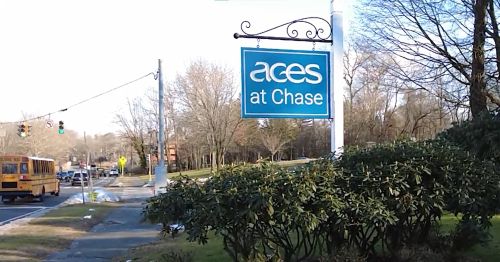-
Our Agency
- About Us
- Calendars
- Contact Us
-
Directions
- ACCESS
- ACES at Chase
- ACES International Preschool and Childcare Center
- ACES Transportation Services
- Center for Autism Spectrum and Developmental Disorders
- Central Office
- Educational Center for the Arts
- Educational Technology
- Little Theatre on Lincoln Street
- Mill Road School
- Network Services
- Staff Development / Administration
- Village School
- Whitney High School North
- Wintergreen Interdistrict Magnet School
- Human Capital Development
- Education Foundation
- News / Press
- Publications
- Request for Proposals
- Employment
- Events & Workshops
- Referrals
-
Schools & Programs
-
Special Education Schools
- Center for Autism Spectrum and Developmental Disorders
- Mead Elementary School
- Mill Road School
- Village School
- Whitney Academy EXPLORE & CREATE
- Whitney High School North
-
Magnet Schools
-
ACES at Chase
- About Us
- ACES at Chase: History & Origins
- Admissions
-
Student and Family Portal
- Breakfast and Lunch Menus
- Cancellations, Delays, and Early Dismissal
- Community Health Center
- Dress Guidelines
- Family Teacher Organization (FTO)
- Health Office
- Principal's Corner
- Monitoring Grades: PowerSchool Parent Portal
- Quick Links
- Student Handbook
- Summer Reading and Math
- Technology & Digital Citizenship
- Virtual Suggestion Box
- Document Library
- Contact Us
- Back to ACES
- Educational Center for the Arts
- Wintergreen Interdistrict Magnet School
-
ACES at Chase
- Alternative Education
- ACES Early Head Start
- ACES International
-
ACES International Preschool and Childcare Center
- About Us
- ACES International Preschool and Childcare Center Donations
- Admission Interest
- Meet the Staff - Newtown Center
- Meet the Staff - Woodbury Center
- Calendar
- Contact Us - Newtown Center
- Contact Us - Woodbury Center
- Family Portal
- Enroll Now: ACES International Preschool and Childcare Center Newtown Location
- Back to ACES
- ACES Open Choice
- Family and Community Engagement
- Magnet School Parent Choice
- School-Based Services
-
Special Education Schools
-
Services
- ACCESS Adult Vocational Services
- ACES Insurance Collaborative
- ACES UP Renewable Energy Solutions
- Alternate Routes to Certification
- Business Partnership Opportunities
- Center for Safe Schools
- Clinical Services
- Educational Technology
- Facility Rental
- Fingerprinting
- International Programming
- Marketing and Communications Services
- Network Services
- Professional Learning
- Regional Education Councils
- Regional Special Education Transportation
- Speech and Language Services
- Transportation
- World Language Services
- Find
« Back to News List
« Back to News List
Local school emphasizes visual arts
January 24th, 2014

A few blocks from Timothy Dwight College, high school students from New Haven and the surrounding area are enjoying an atypical high school experience.
Last week, visual arts students from the Educational Center for the Arts guided their families and other guests through a showcase of their artwork installed in ECA’s classrooms. The half-day inter-district magnet high school hosts an art open house at the end of each quarter, once students have produced a body of work in the area of visual arts which they have studied in depth during that term.
Students at ECA, who come to the school from 26 Connecticut towns in addition to New Haven, spend their mornings at local public schools and then travel to the magnet school four afternoons a week to study dance, creative writing, theater, music or the visual arts. Subjects offered include sculpture, black-and-white photography, digital photography, painting, printmaking, drawing or video.
ECA Visual Arts Department Chair Johanna Bresnick attributed much of the quality of students’ instruction to the high caliber of New Haven’s arts community, explaining that every member of the school’s visual arts faculty is a practicing artist in the area. Karen Dow GRD ’98, who teaches printmaking at ECA, said that she enjoys teaching at ECA more than she enjoyed working at a number of universities, including Yale, partly because of the freedom ECA gives her to develop her own curriculum.
“Students here are more invested in what they’re doing,” Dow said. “And I get 12-hours a week with them in the studio, which is incredible.”
Olivia Joy, a senior studying visual arts at ECA, said that like most of her peers, she wants to pursue art professionally. Joy estimated that over half of her classmates are applying to art schools, either exclusively or in addition to liberal arts colleges.Joy said she plans to attend a fine arts school only after receiving her bachelor’s degree.
Like most ECA students, Joy takes 5 morning classes at the local Wilbur Cross High School, a public high school in New Haven. She fits all of her academic classes in between 7:30 a.m. and 12 p.m. before walking over to ECA in the afternoon. She explained that her divided high school experience is well worth it both professionally and socially.
“ECA is such a supportive environment; all the peer critique is loving,” Joy said. “Cross is much more hostile.”
Visual arts student Rebecca Fraleigh noted that unlike at her comprehensive high school, students at ECA call their instructors by their first names. She explained that the close relationship between student and teacher is only one manifestation of ECA’s unusually strong sense of community.
Bresnick explained that ECA helps students develop their portfolios — seniors are offered a seminar dedicated to portfolio reviews that helps them with their art school applications. She added that many art schools come to recruit visual arts students from ECA.
ECA is ACES’s only arts-specific school and one of two arts-specific schools in New Haven, the second being the Cooperative Arts and Humanities High School. Co-op similarly offers concentrations in dance, creative writing, theater, music and the visual arts, but, unlike ECA, it is a full-day high school, providing instruction in traditional academic areas of study as well in the arts.
Ellen Maust, supervisor of the performing and visual arts for the New Haven public school system, explained that Co-op used to require prospective students to apply and audition for spots, as ECA does, but that now, after a civil rights controversy over inequality in preparedness between districts, students enter a lottery for admission. Last year, 700 students entered the lottery for the 133 seats available for New Haven students, and 480 students for the 89 seats open to applicants from New Haven’s suburbs.
ACES Public Relations and Marketing Manager Evelyn Rossetti-Ryan said that of the over 500 students who applied to ECA last year, 302 were accepted. In addition to students from New Haven schools, ECA enrolls a significant contingent from 26 other towns as well, with each district allotted only a certain number of spots for students in each department at ECA, depending on the funding that the district is willing to provide, Dow explained.
Bresnick noted that ECA’s application process takes into account the discrepancies in the access to arts resources that prospective students have had.
“We take students based on creative potential, on the degree to which they are interested in making art outside of class and take an interest in working in art as a way of being who they are,” Bresnick said.
ECA is run by Area Cooperative Educational Services, an agency that provides resources to 25 school districts in south central Connecticut, including adult career training. The organization, which also operates 3 magnet schools and 5 schools for special education, is funded by tuition and fees from local education agencies, state and federal funds and private donors.
The Educational Center for the Arts is located at 55 Audubon St.












